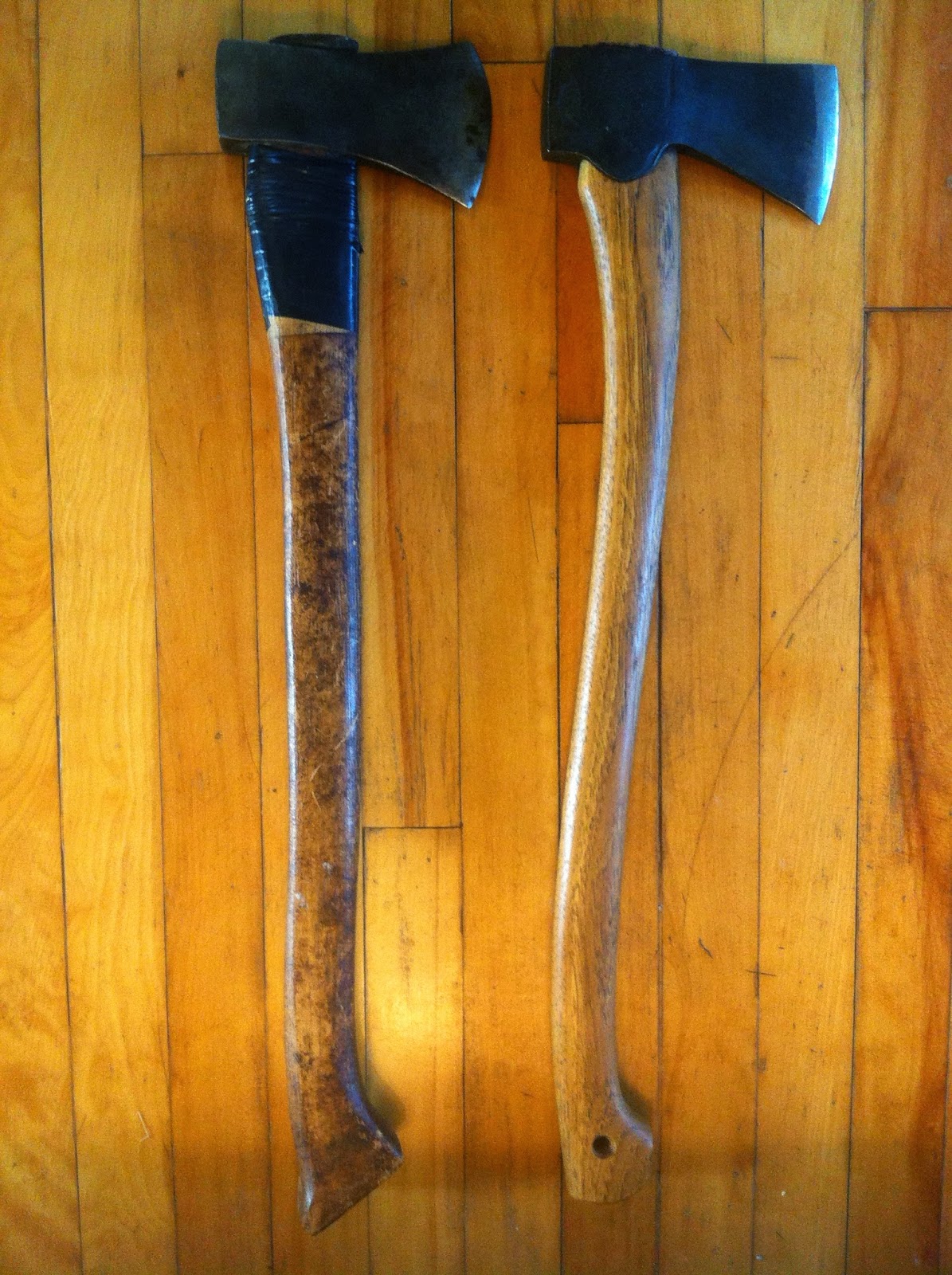Is the Gransfors American Felling Axe an Efficient Axe? Part 1: Specs and Comparison (In Progress)
While the Gransfors Bruks axes are well known, even revered in the bushcraft community, not a lot of information is available on the felling axe. This is especially true in regards to the axe's intended purpose: falling and bucking larger trees, and general-purpose woods work. The Gransfors American Felling Axe is not a bushcrafting axe, nor was it intended to be - as becomes clear when we recall how the axe was requested by some Maine woodsmen experienced with some of the best felling axes in historical use. The question that should be asked is, then, 'Does the axe stand up to these historical beacons of the woodsmen?'
There are some others who have voiced concerns over flaws in the design of the Gransfors felling axe. Many of these individuals seem to work on trails, homesteading, and general wood collection for fuel use. I fear that part of the criticism of the Gransfors design may come down to a reaction to popularity, the allure of traditional tools with real tradition in them, and perhaps even a loss of true knowledge of what the best axe is (I will try to clarify some of my own ideas on this throughout this review/test). However, there is an important question at the heart of these critiques: although taken as the ideal of axes today, the Gransfors may not in fact be the realisation of that ideal. What better way to give their axe a proper review then, and test it according to the ideal axe? Rather than taking away from the axe, I will attempt to show where it might improve.
I recently was able to purchase an old Emerson & Stevens 3-1/4 pound single-bit axe which is exactly the dimensions of the axe described in D. Cook's important resource "The Ax Book". In the chapter 'The Efficient Ax' Mr. Cook attempts to draw out an ideal of the single-bit axe that is nearly as accurate, balanced, and efficient as the double-bit axe. Given Cook's knowledge - his experience with and study of axes far surpasses anyone suggesting the best axe today - we should take his study as a guide. What I have decided to do, then, is work with several axes close to the ideal, or Efficient Ax, and see how the Gransfors performs alongside them. The axes will be the Gransfors 3-1/4 lb. single-bit felling axe, the Emerson & Stevens 3-1/4 lb. single-bit felling axe, the Spiller 3-1/2 lb. single-bit felling axe, and the Campbell's 3-3/4 lb. double-bit felling axe.
Specs
The Emerson & Stevens (E&S) axe has exactly the dimensions of the axe Cook used in his representation of the Efficient Ax, apart from the poll. The poll on mine is 1-1/4" thick, which leads me to wonder whether or not the 1" represented in "The Efficient Ax" was just a mistake. The poll is the same on the Spiller, and it would not make sense to negate the axe's balance by thinning out the poll. This is a small matter, apart from the potential to reduce the efficiency of makers who may attempt to recreate the E&S model shown in Cook's study. Likely Gransfors would have known of this image given their work with the Maine woodsmen and the old Spiller.
Nonetheless, here are the dimensions of the axes:
E&S (Very little wear)
Length: 6-1/2"
Cutting Edge: 4-3/4"
Poll Width: 3-1/8"
Poll Thickness: 1-1/4"
Axis to Bit Length: apprx. 3-1/2" max.
Gransfors (no/microscopic wear from a 2000 grit stone and strop)
Length: 7"
Cutting Edge: 4-1/2"
Poll Width: 2-7/8"
Poll Thickness: 1"
Axis to Bit Length: apprx. 4-3/8" max.
Spiller (my estimate of 1/4" of wear max.)
Length: 6-5/8" (7-1/8")
Cutting Edge: 4-3/4"
Poll Width: 3"
Poll Thickness: 1-1/4"
Axis to Edge Length: apprx. 3-3/4" max. (4")
Campbell's
Overall Length: 9-1/2"
Cutting Edge: 3-13/16"
Thickness: 1"
Bit Length: 3-1/4"
The length from axis to edge is one of the most important measurements, as it corresponds to the balance of the axe and its accuracy. Anything under 3-3/4" is preferable, while most axes are 4-1/2" or more (current Jersey-pattern Collins axes are around 4-3/4"). And the reader should note how the bit length of the Campbell's is 3-1/4", which means its useable length is 3/4" longer than that of the Spiller (when using an average axis length within single-bit eyes of 3/4"). Important to keep in mind as well is that most old axes have been worn down, so vintage steel users will have to compensate for this loss - most likely they have longer axis lengths than the Gransfors given that Jersey, Michigan, and Connecticut patterns are quite common and often preferred by collectors.
This would be a plus for the Gransfors, but may be one change that people do not like compared with a Spiller or E&S.
Given this 3/4" board, and the perfect balance of the double-bit adding another 1/2" or so, the other axes deviate by approximately 1/4" (Spiller), 1/2" (E&S), and nearly 1-1/4".











Comments
Post a Comment